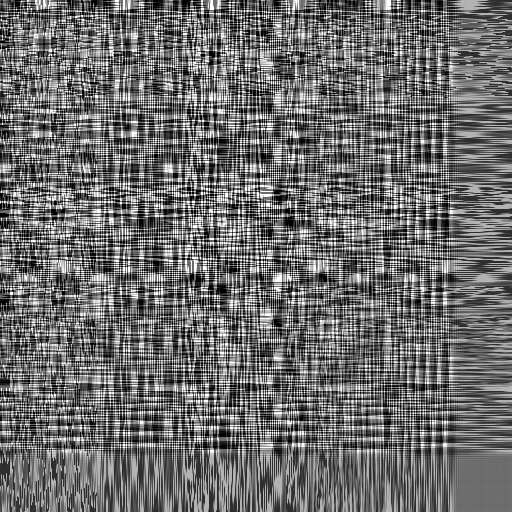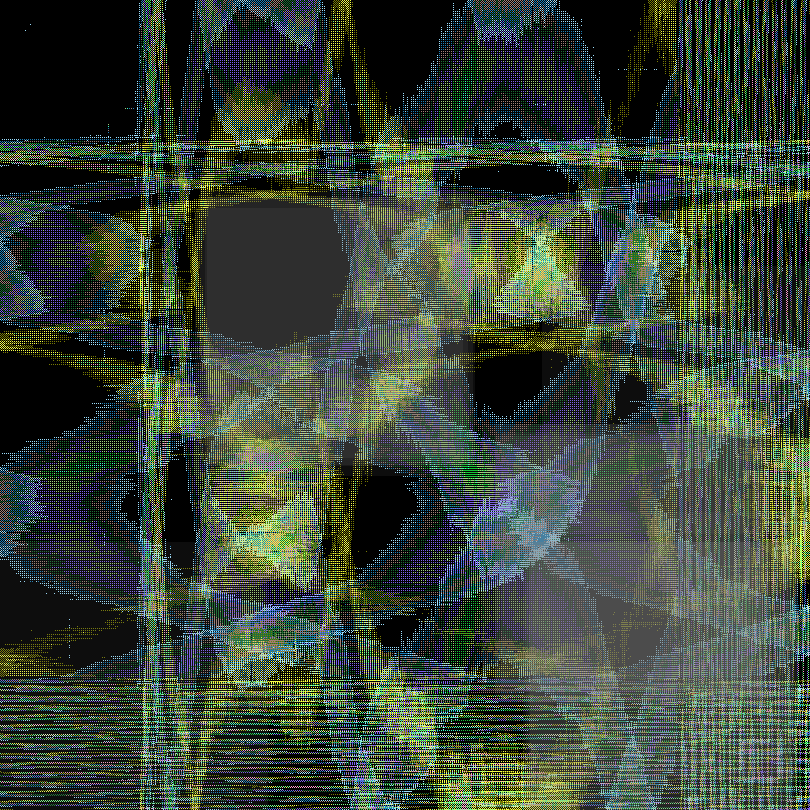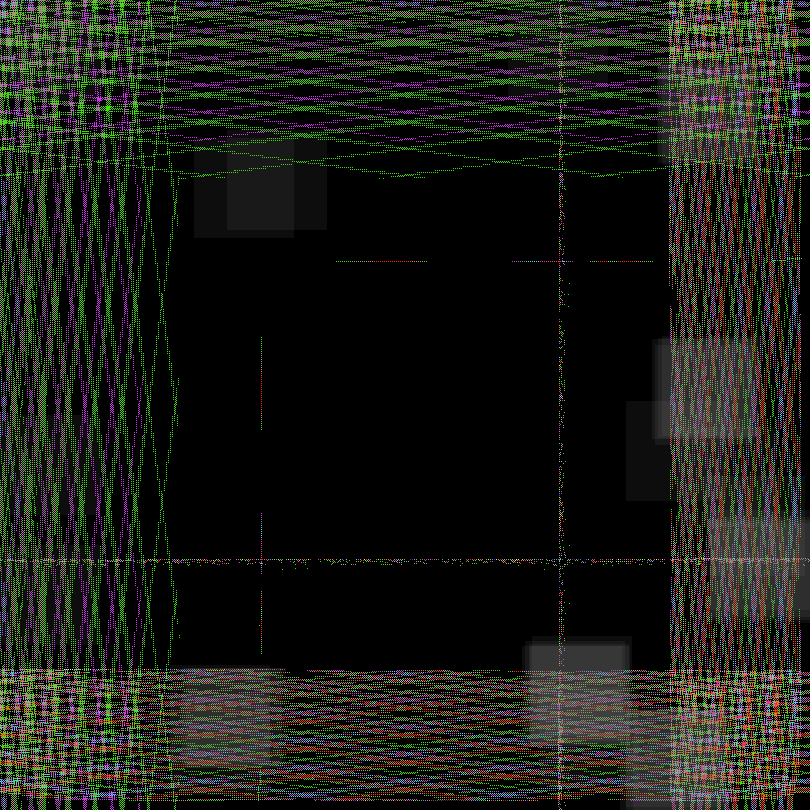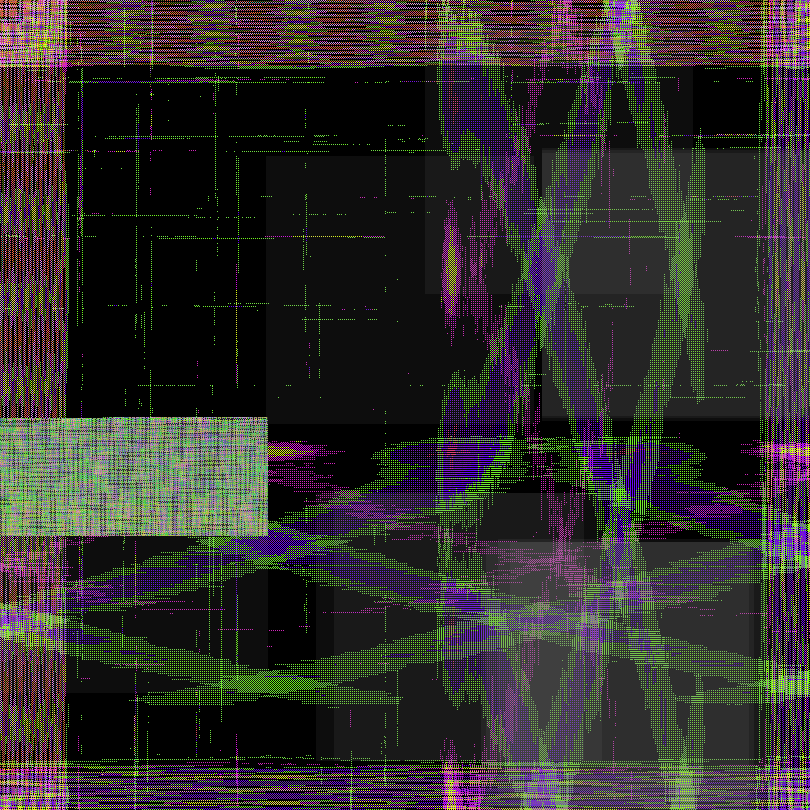Woven Sound
refers to the weaving of images with live sound. Incoming sound is digitised by the computer into a stream of left and right audio samples. In the woven sound algorithm, each stream becomes a linear thread, with samples mapped to pixel values. The threads can be woven in various ways, but a simple and effective weave is to use a warp and weft threading, so that left samples become the vertical warp and right samples become the horizontal weft. For continuity, the threads are doubled-back at the image edge.
In a live weave, the patterns are made in real time; each image represents several seconds of sound.
A woven multi-phonic saxophone texture

Weave from non-pitched sounds

Readings
- The woven sound technique is first described in this paper
- The neologism is coined in this short paper, published at the Third Iteration conference, Melbourne, Nov 30th-Dec 2nd 2005
- A long paper containing aspects of woven sound presented at Generative Arts Practice, Sydney, Dec 5th-7th, 2005
Images from sax + brush + Swarm Techtiles recorded 11th May 2006 (Tim Blackwell, Janis Jefferies, human performers). The weaves show superpositions of saxophone (curvy patterns) and brush sounds (straight lines). Also evident is microtexture washing, a dilution of local texture caused by unweaving into sound (see Swarm Techtiles)


